My AUB blog 2020-2021
- Sam Fried
- Oct 27, 2020
- 9 min read
Updated: Feb 10, 2021
14th September 2020 - June 2021
I am Sam, Im 18 and I've just started at AUB on the arts and media foundation course. It has been a strange year with A levels etc suddenly finishing in March, followed by being lockdown at home and then a bit if anormal summer, results day, results chaos and finally arrive in Bournemouth to start my course. Living in Madeira Road halls of residence.


Today we had our first zoom intro lesson as because of covid we will only have one day on campus each week. I am in group 1 and the first project I am timetabled to do is art, after that it is design and then media.
So i guess that i start with the area im least used to having not done any formal art study since year 8. If you chose photography, graphics and media for gcse - you couldnt do art as well.
I thought this summed it up well
art - Work is driven by yourself not from a brief, the work is from you as artist.
design - often problem solving - you get a brief, this is what my Graphics A level was mostly like
media - framing and representing or selecting content and then editing it to a message that comes from you as the artist - this is familiar also because of my BTEC in Creative digital filmmaking
Stage 1 Art - 14th September 2020 - 25th September 2020
notes from launch session
We are going to explore the characteristics of art and these words can help with this.....
Original, Commentative, Provocative, Self-Directed Material, Socially Aware, Interrogative, Playful, Critical, Experimental, Risk Taking, Informed, No Boundaries, Embracing the accident, No mistakes, Not afraid of what others think,
This session helped get me thinking again about creating original work of my own.
On september 15th - first day on campus -

salvador dali automatic drawing

André Masson, Automatic Drawing. 1924 “[his drawing]...almost literally gave wings to his hand. Not content simply to trace the shape of objects, this hand, enamoured of its own movement and of that alone, described the involuntary figures within which, as experience has shown, these shapes were destined to become re-embodied.” André Breton (1928) Surrealism and Painting. p68.

In the first workshop in the drawing studio we...........
“No direct drawing is done on the front of the paper,” Serra has said. “I don’t see the drawing I am making until the paper is pulled off the floor and turned over. . . . I have used various means over the years to avoid known solutions. In this series of line drawings the process is more important to me than analyzing and placing a line in relation to other lines.” RICHARD SERRA Line Drawings September 14–October 19, 2002
I liked these more abstract drawings because they seed to allow for more freedom of expression instead of drawing being about recreating images accurately.

As my focus grew onto SLEEP PARALYSIS
Secondary research
What is sleep paralysis?
Scientifically speaking, our bodies paralyse themselves during rapid eye movement (REM) sleep to ensure that we don’t physically act out any vivid dreams. During an episode of sleep paralysis, your mind regains consciousness before your body wakes up and you are plunged into a hyper-realistic and multisensory space. As a physically harmless condition with no clinical treatment, the NHS advice is vague, recommending that sufferers of sleep paralysis establish a regular routine and “get a good night’s sleep”.
To effectively come to terms with the crippling fear and intense hallucinations, many feel the need to get creative.

Blog on sleep paralysis
research Alobar
after reading this ( below) I started keeping a dream diary but my mine was with words not drawings
I like this description as someone who has never slept well and always found school hard after a poor nights sleep
After years of being accused of laziness, Rebis Alobar (not his real name) was diagnosed with narcolepsy. Bouts of daytime drowsiness are the popular hallmark of this condition but for Alobar, the lesser known symptoms of sleep paralysis and hypnagogic hallucinations were the most distressing. Determined to overcome this mental hurdle and struggling to represent his experiences by writing fiction, Alobar turned to drawing and painting.
“I found it wonderfully therapeutic as I wasn’t limited to converting my abstract concepts into words. I could create concepts that were far more abstract and more accurately represented my emotions during an episode of sleep paralysis,” he says.
Alobar now sleeps with a sketchpad by his bed and believes that it is his subconscious that dictates his artwork. His drawings are chaotic, bursting with symbolism and splattered with black ink. According to Alobar, his artwork reflects his precise emotions during a narcoleptic episode and presents his search for an abstract “truth” which he conceptualises as a “glowing orb submerged in tar”.
“It’s why my art is mostly black and white and looks frantically splattered on a canvas. I want to hold on to that frantic element from my dreams,” he explains. https://alobar.livejournal.com/4579643.html
I found the sleep stuff interesting because i was recently diagnosed with adhd as i find it hard to stay focussed but part of that may be sleep deprivation which affected me at school.
There are lots of artists who have explored the idea, many of them quite surreal works.
An apelike, demonic creature crouches on the chest of a sleeping woman in Henry Fuseli’s The Nightmare (in gallery). The oil painting is thought to be the first artistic impression of sleep paralysis, dating back to 1781. Many of the other images I researched came from the same original feelings where a person is awake but cant move and this makes them panic and then their worst imagininings take hold.

So I started to play with drawings that made sense of this for me





after exploring via mind maps, drawing and painting i created this


I experimented with Triptychs and added paper clip chain to my original drawings . I was pleased with how this represented the sleep paralysis without much explanation needed.
In the class we discussed how to remix our own interests - it was described like this
Synthesize / Morph / Reframe
In our sound and lens workshop -
we looked at various film and video artists and how they mixed up image and sound to create juxtapositioning that created new meaning

I wanted to create something that represented the paranormal aspects of sleep paralysis. much of the description of sleep paralysis seems to describe either a feeling of crushing on the chest like something sitting on you or claws/ hands reaching out from your subconscious.

If I had time to explore this idea further i would have edited a soundtrack which had sounds and thoughts that the subject could be having during a dream or half waking experience so a mixture of normal household sounds and also the scary thoughts from a dream.
On reflection I should have filmed her with her eyes closed so that the claw fingers were a representation of the touch from the subconscious.
The claws Ive used here are a representation of the ones i would design which would be more like the drawings i produced in charcoal.
More reflection on other artists work made me want to try something less removed from every day life and more reflective on my current situation. I find i am sleeping badly in my halls room and i was having anxiety dreams related to my change in location and new organisation.
No only have i left home for the first time, but i am in a new city away from family and friends and i am managing my own food, money, time and place. Although i like the independence it is a stressful time especially with Corona virus stuff going on all the time.
My dreams are strange and I feel like I've lost something all the time. I cant get comfortable and im too hot and too cold and the noises at night are different.
I tried to use what I had to make something that represents that.



My learning points from this would be using a range of different visuals on one theme can help me see new ways of doing things especially when looking at artists work.
In terms of myself, i think more self discipline over seeing an idea through and recording more of what doesn't work for me as well as what does.
Stage 1 - Design September 28th - October 9th
So the next part of my Stage 1 at AUB is the design part of the course. In my head I think this is the most like the work I've done in Graphics A level where the creativity lies in designing a product to meet a purpose or a brief more than something that comes from your own interests.
If it is like that then I like the part about coming up with ideas.
Design 1
ONLINE Project Launch - What is Design?
Design could be described as the end product and the process that gets you there. Its a creative process which combines the usefulness with the 'look' of a thing. It takes abstract thoughts and inspirations and makes something concrete. its about the real people who will use the product, service, building or experience.

I made this as a comment on all the covid restrictions.
‘Discover, Define, Develop and Deliver’
Study of a designer - Jean Jullien
What is their creative process? What materials and methods do they use & what do they design? How do they develop their ideas? i.e. sketches, maquettes, toiles, photography, digitally etc. How do they document & present their creative process? What did they study and how did they become a ….?
Which design discipline are you working within? • Who are you designing for? User/ Audience/ Location/ Brand/ • What problem are you trying to solve?
The Brief
Conceive and produce an animation to accompany one of the two selected audio files that will clarify, energise and illuminate the content.
What legacy do we want to leave for future generations? Philosopher Roman Krznaric urges us to think long-term and consider how to do the right thing for our descendants by living within our planetary bounds.
Discover
Moving pictures notes .....
I don’t have to make the animation just plan it
Storyboard the image sequence
Style – drawn, photographed, found footage?
Artists study related to design
Study of a designer - Jean Jullien
I chose Jean Jullien to study because his work is funny and clever and looks great. He is popular for his political ideas but also for his simple design of plates and cups - he crosses lots of traditional boundaries.
What is their creative process?
‘I find excitement in the use of practicality and the use of something and the sharing of that use’
"If I answer the brief what else can I add to it?"

explained in this video https://www.youtube.com/watch?v=2_rRswa_Mhg
Q. What materials and methods do they use

& what do they design?
A, He designs and illustrates in many mediums and blends art and design, producing things that make you think. he draws cartoon figures and creates objects that are both practical and aesthetically amusing

He studied art and design and he is hard to define as either designer or artist - he calls himself an illustrator but he does more than illustrate.


Jean Jullien is great at getting important messages over without preaching. as a result he can reach large audiences that sometimes dont even know they are being influenced by his work. When creating an animation with a political message about saving the planet this is important to understand.

Discover!
I researched animations that help get important messages about climate change over
Below is the transcript of the speech by Roman Krznaric - i listened to it over and over to try and get the important bits to emphasise

My mindmap helped me to try and focus on what was important in the message. what are the root causes, how does capitalism and over consumption effect our choices as a planet?


I planned the shots to cut to the rhythm of the sound track instead of the other way around. The images are not depictions of the text but are aimed to combine with the words to powerful effect.



I am reflecting on the fact that the animation pathway seems to focus on drawn animation at AUB and as I'm not an artist or good at drawing and I'm mainly interested in stop motion. Maybe I should look at film instead.
Stage 1 - Media - 12th October until the 23rd October (also spent in isolation)
The bit of stage 1 I was most looking forward to was the Media part and then I was in contact with another student who had tested positive and was told to isolate for 14 days. I couldn't see anyone and I couldn't go on campus so i missed all the direct teaching ( x 2 days).
The brief was 'Locale' so I focussed on the only things I saw and did for 2 weeks. my bedroom and a Covid test centre.
Launch day presentation - (zoooom)




Doing nothing is an art form and I am the master of it. Day 114
Here is a bad mood board


A flip book i made of what i can see in my room. i should have added colour. Day 234

How I used Premier Pro in isolation.






I have finished stage 1 now and have to think about the future which is a challenge when none of us know whats going on. I know i need to choose between animation and film pathway.
STAGE TWO
So its December 2020 and I have decided to try and follow the specialism of animation for stage 2. As I've said before I don't know which way to go but after discussing with my tutors it seems like a good idea to use this time to explore animation more and find out if its for me. If I don't try I wont know. My worries are that every thing I read suggests its more about drawing and due to my subjects I've studied until now I haven't done much drawing recently apart from some story boards and what I did in stage 1 to explore ideas.
I am afraid that everyone who takes animation will be more art focussed than me and that as I've mostly focussed on narrative or music video type work until now that i could feel like im in the wrong place. but if i dont try i wont know.










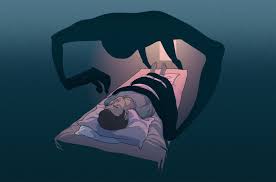
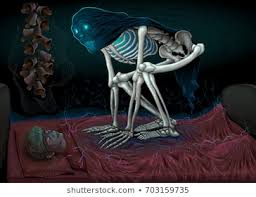
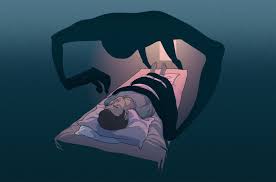
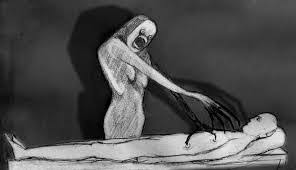
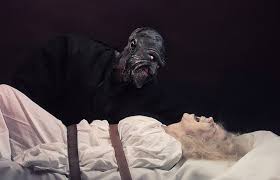



Comments